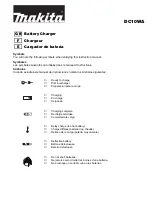
SAMLEX AMERICA INC. | 17
Solar
Panel
Refrigerator
Vent Cover
Vent
Screen
Method B
Method A
Fig. 8.6 PV Wire entry through RV Vent
5. The wire pair from the solar panel can be routed to the interior of the rV through the roof-top
refrigerator vent. find where the refrigerator vent is located on the roof of the rV. See fig. 8.6.
6. Select a suitable mounting location for the solar panel, preferably as close to the vent as possible. The
mounting surface should be strong enough to support the mounting hardware, the solar panel and
wind loads.
7. Take off the vent cover to gain access to the duct opening and keep the vent fastening hardware safely
as the vent cover will have to be replaced after the wires have been routed.
8. The wires from the solar panel can be routed by either of the two following methods:
A. Hole in the side of the vent: Drill a suitable hole in the side of the vent and insert a rubber grommet
(not provided). route the wire pair carefully to the Charge Controller through the hole. Use
appropriate sealant as recommended by your local rV dealer to ensure the penetration at the side
of the vent is watertight.
b.
through the vent screen: route the wire pair through the vent screen grid holes. Widen the screen
grid holes if necessary.
9. Use the cable clamps with #8 self-tapping screws and tie wraps at regular intervals of the wire route
from the solar panel to the Charge Controller to hold the cables in place for a neat finish. Tuck any
excess wire under the refrigerator vent cover.
WARninG!
Avoid sharp, heated or abrasive material on the cable route.
10. replace the refrigerator vent cover and secure with the retained hardware.
11. Crimp the bare end of the wires with the fork terminals provided (fig 8.3).
12. Insert the terminals into the appropriate terminal on the Charge Controller (fig 8.1): Positive PV lead is
connected to the Positive terminal (marked “PV +”) of the Charge Controller and the Negative PV lead is
connected to the Negative terminal (marked “PV -”) of the Charge Controller. Reverse polarity connection
may damage the Charge Controller and the resulting damage will not be covered by warranty.
sectIOn 8 |
wiring
















































